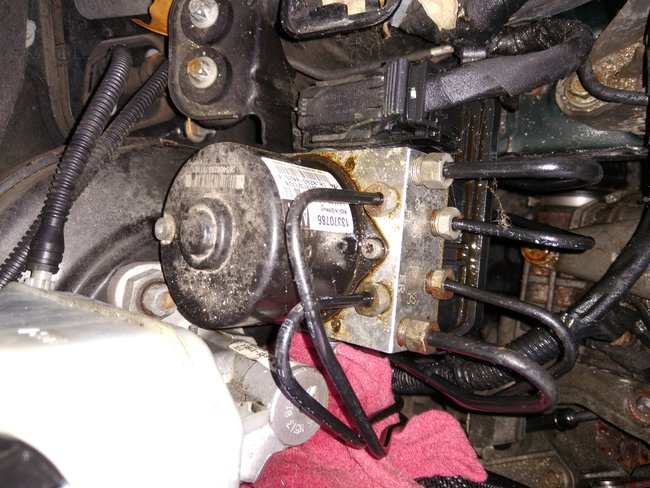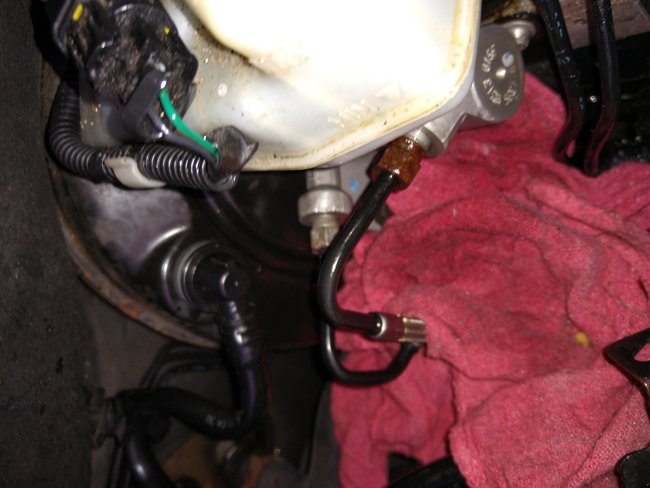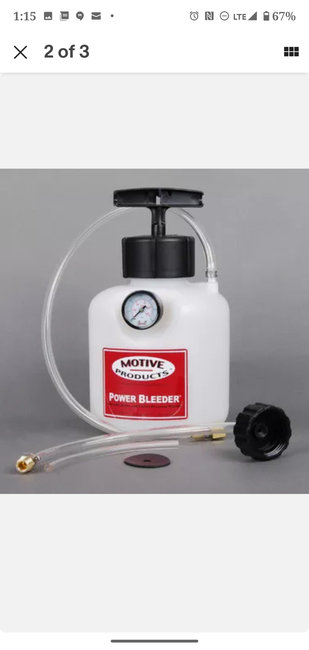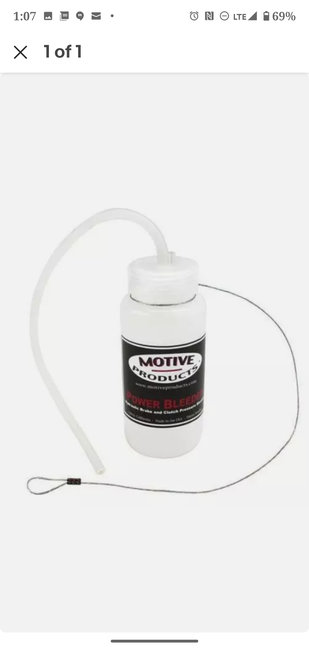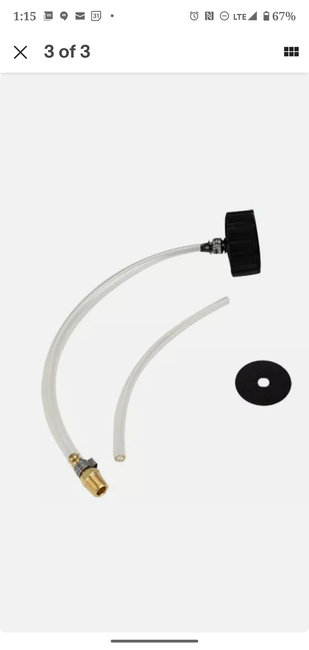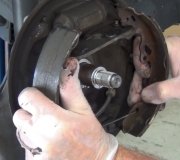With the clutch hydraulic system open for some time a lot of air got into the system. When trying to seal the clutch leak I was initially pressurizing the system dry (only air) just to see if it was holding tight. It was during that time I discovered the left front brake caliper had developed a leak. L replaced both front calipers.
Putting the pressure bleeder onto the same reservoir (the reservoir is shared between the clutch and the brakes) and started bleeding at the right rear brake. Well, I bled and bled and bled, an enormous amount of air with fluid has been purged from that point. I wasn't through there but when closing the bleeder screw it almost didn't close. It just kept turning until I took the wrench off and pushed the screw in while turning it with my other hand and finally it was screwing in. When it stopped I snugged it with the wrench and decided to move on. At least for now.
Going to the next wheel (left rear) I started bleeding it and got a similar response to a lot of air mixed with the fluid. I've probably put in 3.5 - 4 qt.’S of brake fluid. I’m getting clean fluid but I also still have air.
At that point, I started researching the issue and it seems that because of the time the system was open I introduced a lot of air not just to the brake lines but also to the master cylinder and the ABS modulator which, has enough lines coming from it to be confused with an octopus.
So, here is my dilemma: How do I get the air out of the entire system, from all places (components)?
Saying help would be an understatement.
Thanks,
Rick
SPONSORED LINKS
Friday, November 27th, 2020 AT 7:13 AM
